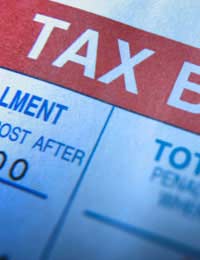Offsetting Your New Equipment Against Tax

There are a number of significant expenses associated with setting up a new photography business. Aside from the fact that you will have to set aside enough cash to pay the mortgage until you are bringing in enough business to survive, you will also more than likely have to spend some money on new equipment.
Photography equipment is expensive at the best of times. While you might be able to find a good deal online or by looking for second hand kit, once you have factored in a new camera, lighting equipment and incidentals like business cards or web hosting, you are still likely to have spend a significant amount of cash.
But, as a small business owner, you are also in a far better position than a conventional employee to reduce your tax bill. HM Revenue and Customs recognise that business owners will incur expenses when setting up their ventures, and they provide reliefs and allowances to help you offset these costs.
Capital expenditure
There are two main ways that business owners can offset their costs. These are through capital allowances and allowable expenses. Capital allowances cover the purchase of plant and machinery (P&M), which might include vehicles, computer equipment or other large, single-purchase items that you need to run your business.Most businesses receive a standard Annual Investment Allowance (AIA) of £50,000. You can offset 100% of your P&M costs, up to this value, in any standard accounting period. Expenditure over £50,000 will be put into the ‘special pool’, which generally provides relief at a rate of 20%.
You do not have to claim the full 20% of any purchases that exceed your AIA. Any unclaimed special pool reliefs can be carried forward to the next accounting period.
Allowable expenses
Business owners and other self employed individuals can also reduce their tax bill through the use of allowable expenses. While capital allowances cover large equipment purchases, allowable expenses cover the day-to-day costs associated with running a business. You might need to pay for web hosting, new stationary, rent on a studio, or any number of other things to keep your business ticking over. Most of these costs can be offset against your tax bill.Generally speaking, costs of this kind can be deducted from your total income over the course of a tax year. So, if your income was £40,000 and your costs were £10,000, your total taxable income (before personal allowances) would be £30,000.
If yours is an unincorporated business, you will use the Self Assessment form to claim these costs. This must be completed by January 31 every year. If your business is incorporated, you will use your Corporation Tax return instead. Your allowable expenses should be calculated with reference to your accounting period, if this is different from the standard tax year.
Minimising your tax bill is a key way of ensuring that your business remains profitable. If you are in any doubt about what you can and cannot claim for, make sure that you seek advice from a reputable accountant. You can always offset the cost against tax!


Re: Wedding Photography Work
You have provided some very insightful information in to the world of wedding photography! Thank you for sharing!
Re: Should I Register to Get Paid For Occasional Photography?
I have created a company name, with me as the owner/sole trader and want to protect it. How…
Re: Should You Specialise or Diversify?
When you're starting out in any small business you're happy for all the work you can get. For a photographer that going…
Re: Should I Register to Get Paid For Occasional Photography?
QUESTION 2: If I wanted to carry on doing free photographs for now with the view to simply…
Re: Should I Register to Get Paid For Occasional Photography?
Hello. My question is similar to Greg's. I work full time and do photography as a hobby at…
Re: What is IR35?
I am a keen amature photograpger, how do I stand if somebody askes me to take some pictures for them and they offer me a few pounds to cover my…
Re: Protecting Your Copyright
"Many photographers choose to register their work with the UK Copyright Service. This service allows photographers to upload their…